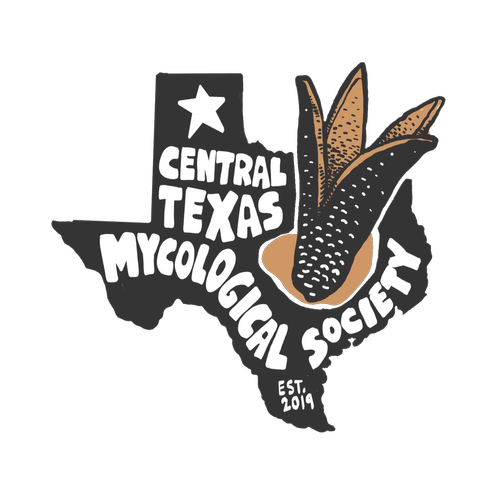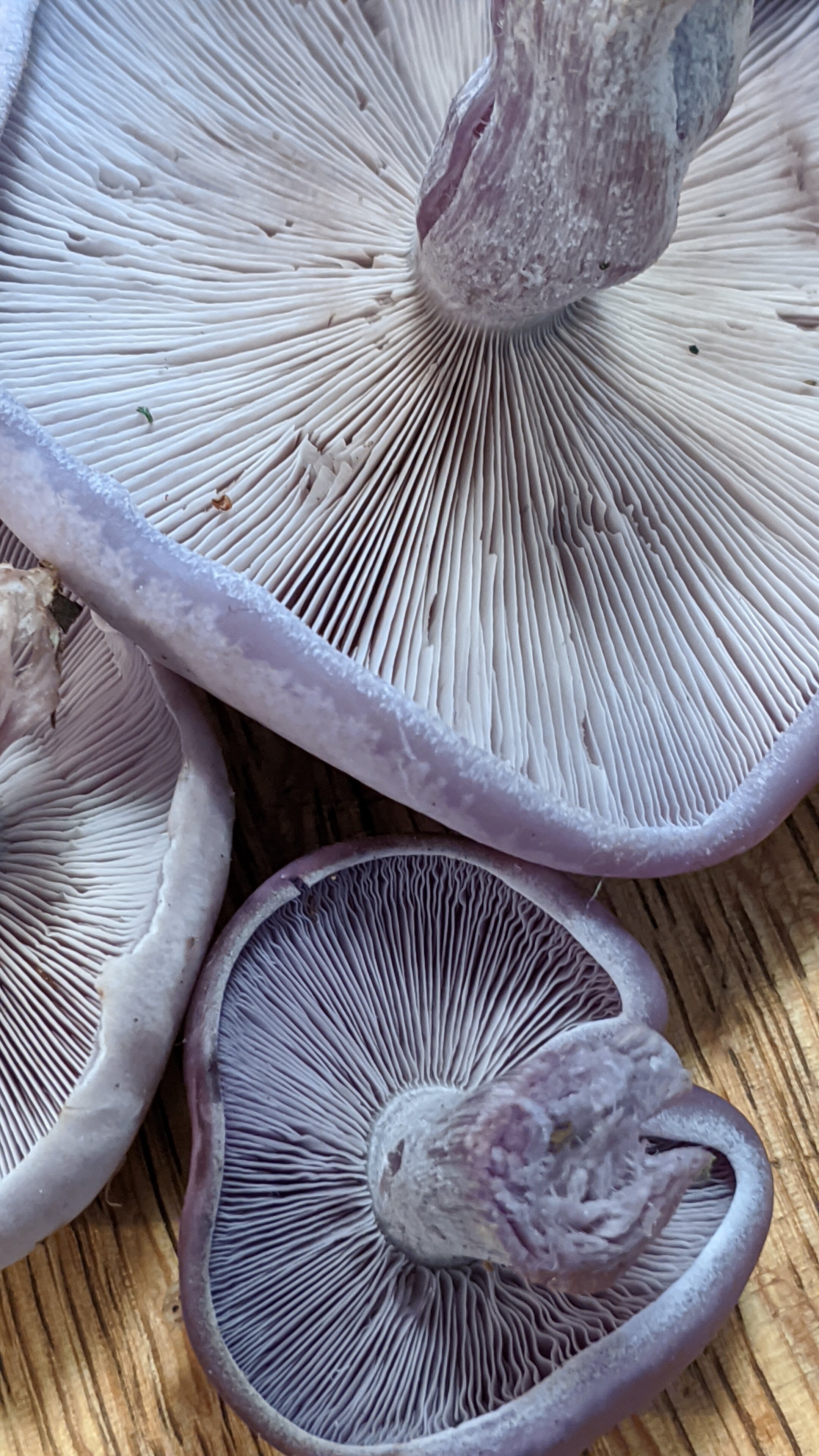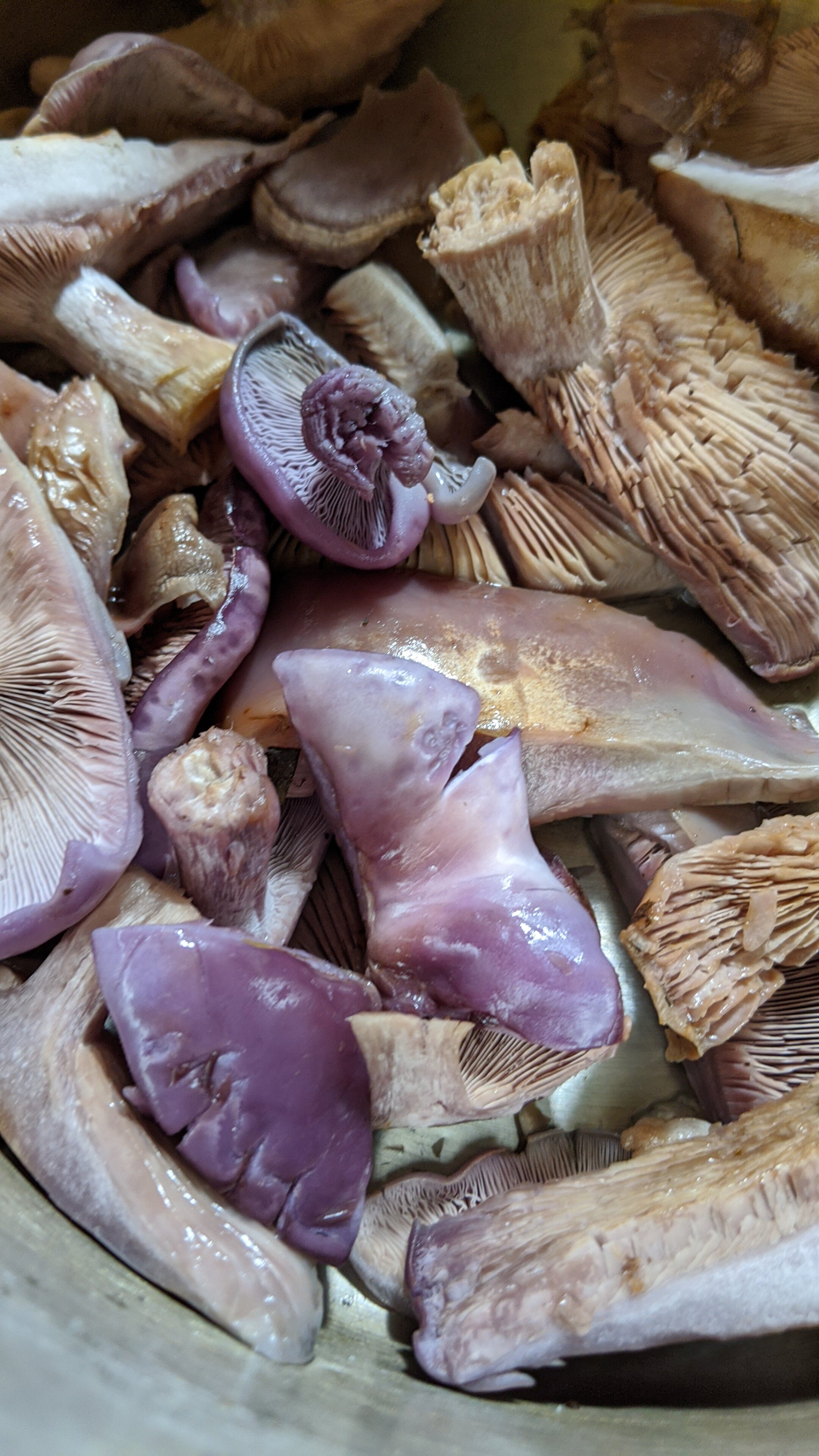Yesterday, I checked a few spots for the distinct, lavender colored Wood Blewit, Clitocybe nuda, which are an good edible mushroom. Wood blewits can be confused with a purple species of the genus Cortinarius, which includes several poisonous species that grow in the same habitat. Just yesterday I found the two mushrooms growing in same habitat. Here’s a few tips for distinguishing the two.
identifying EDIBLE WOOD BLEWITS
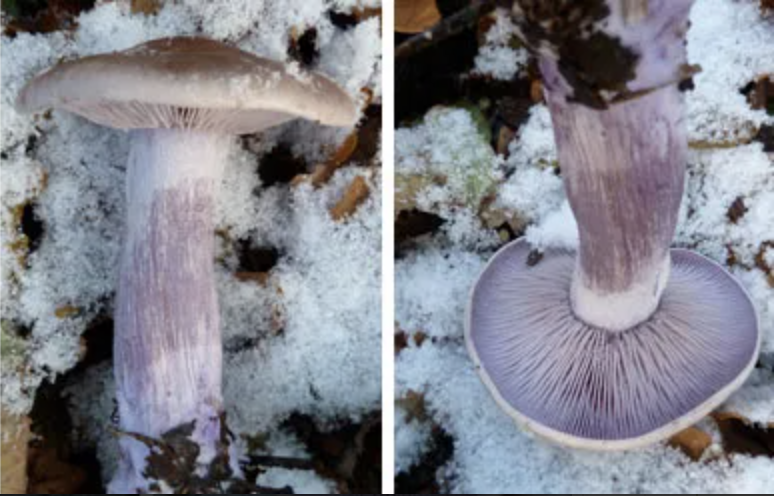
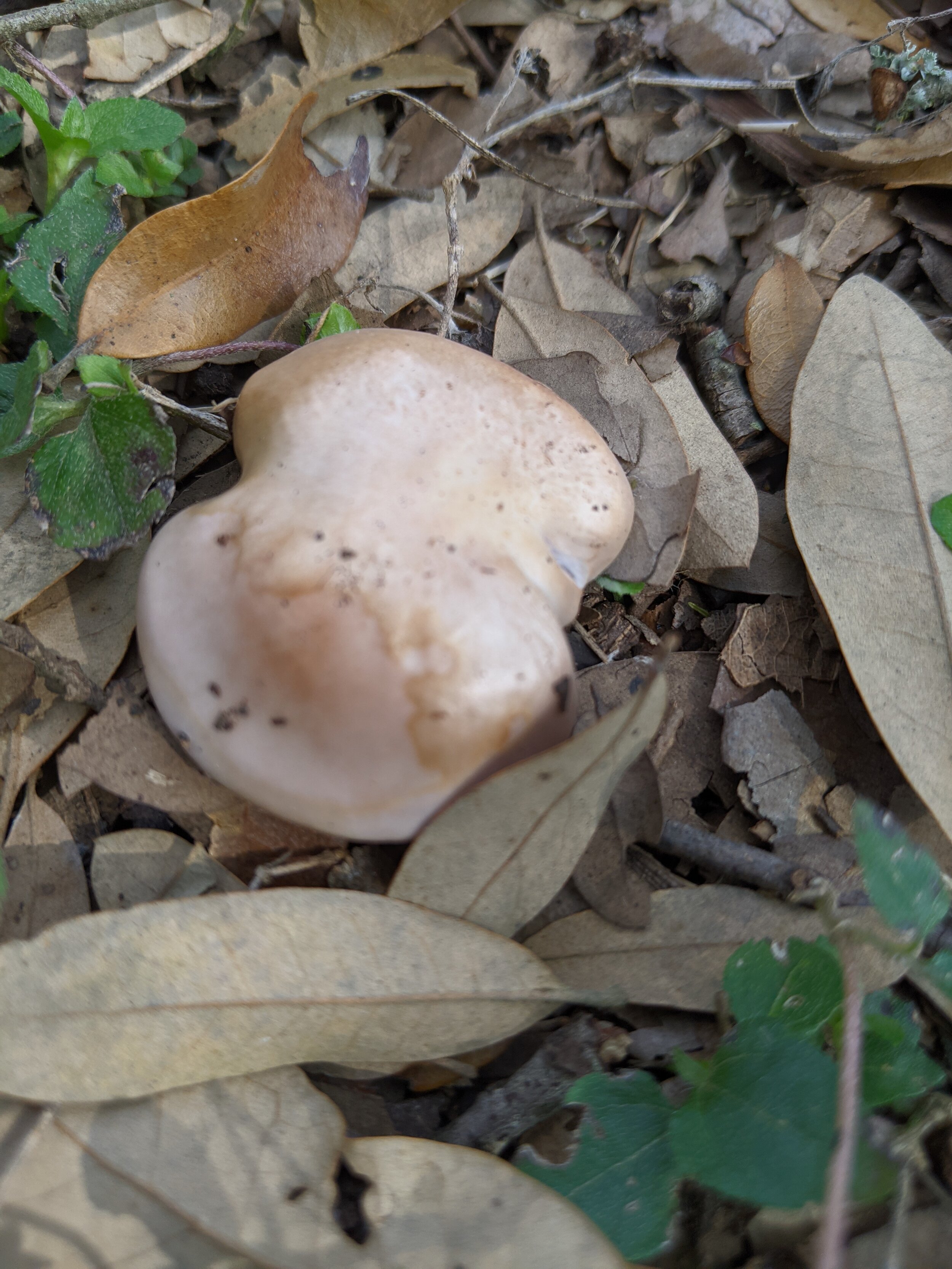
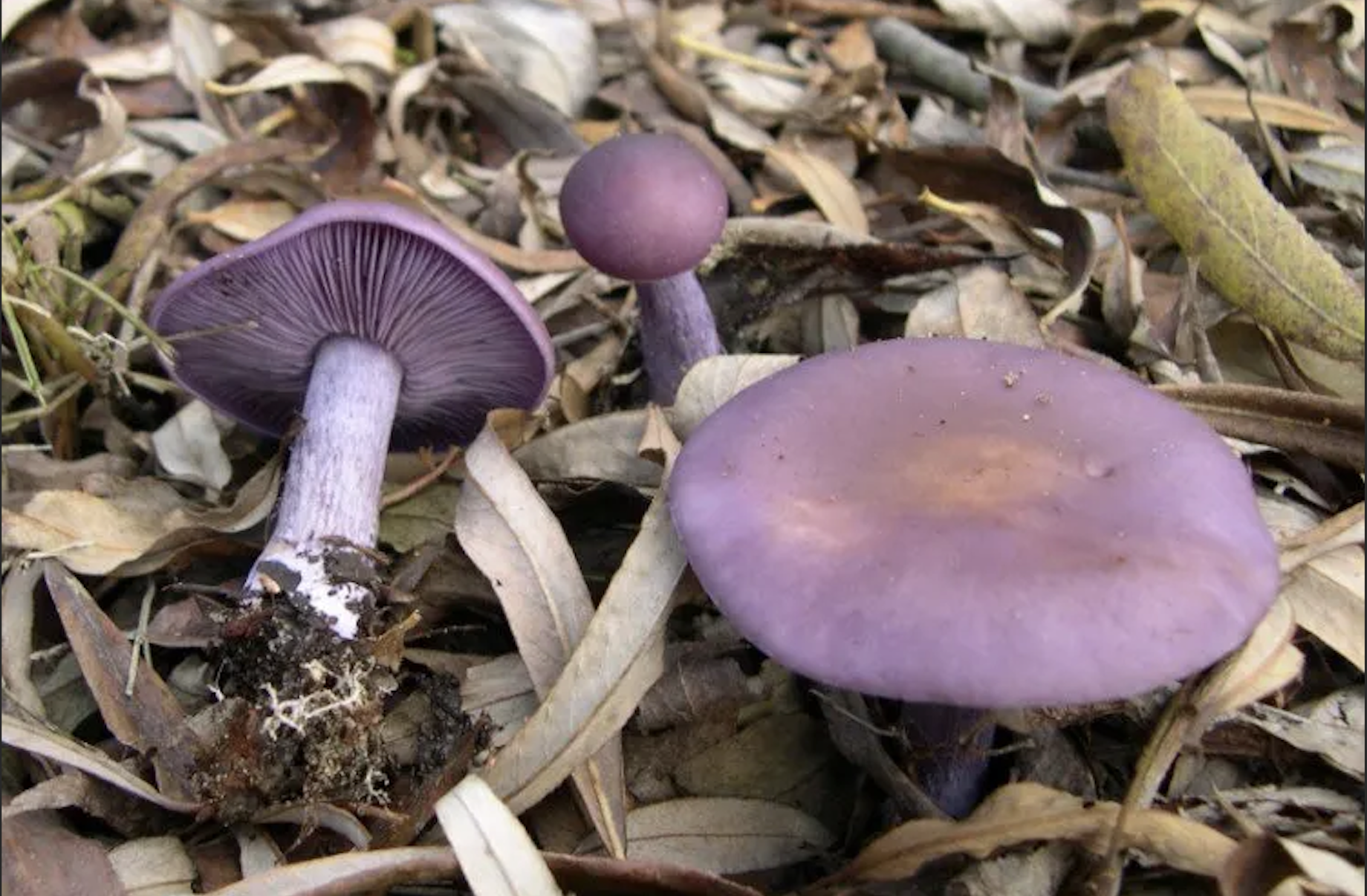
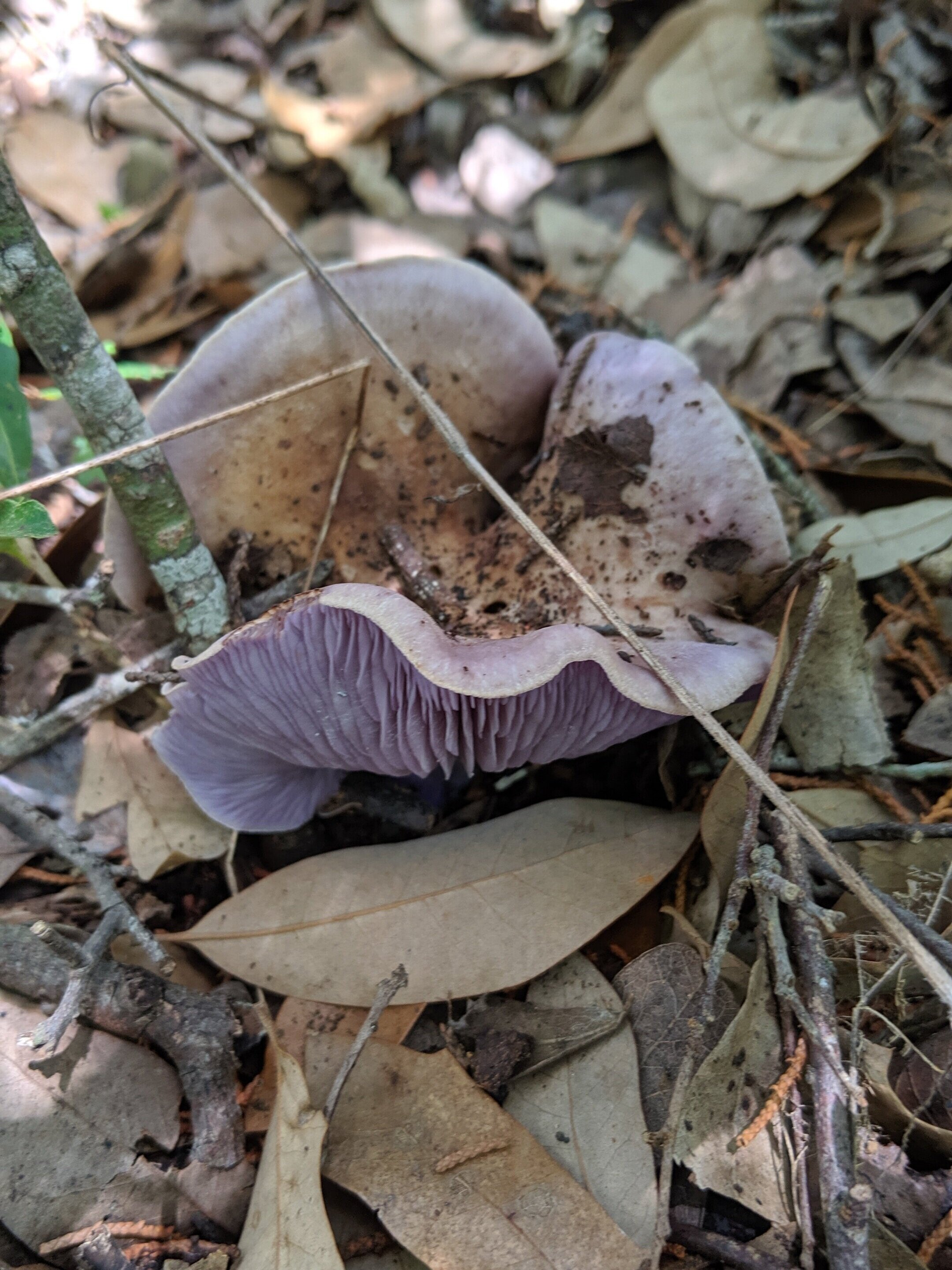
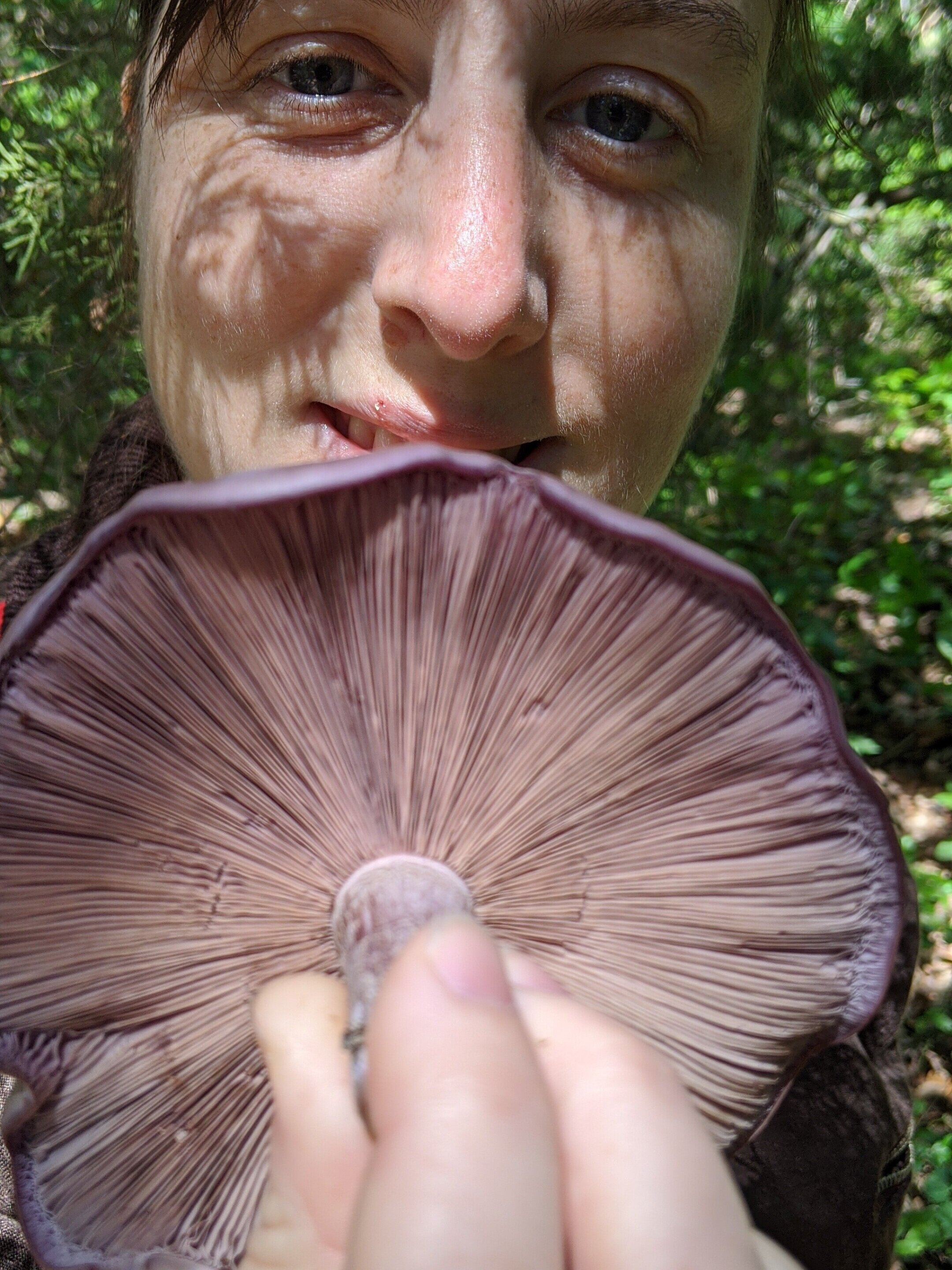
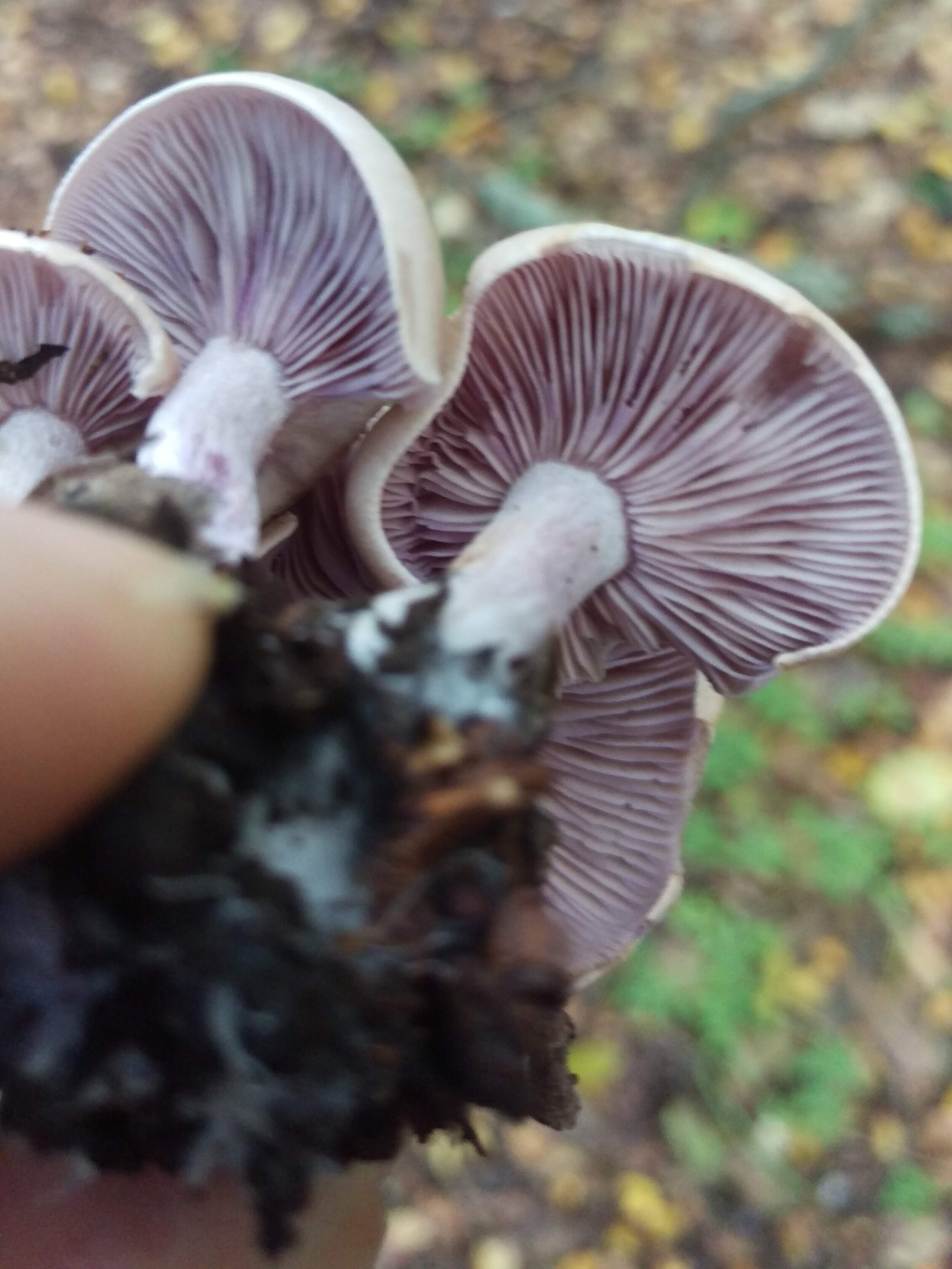
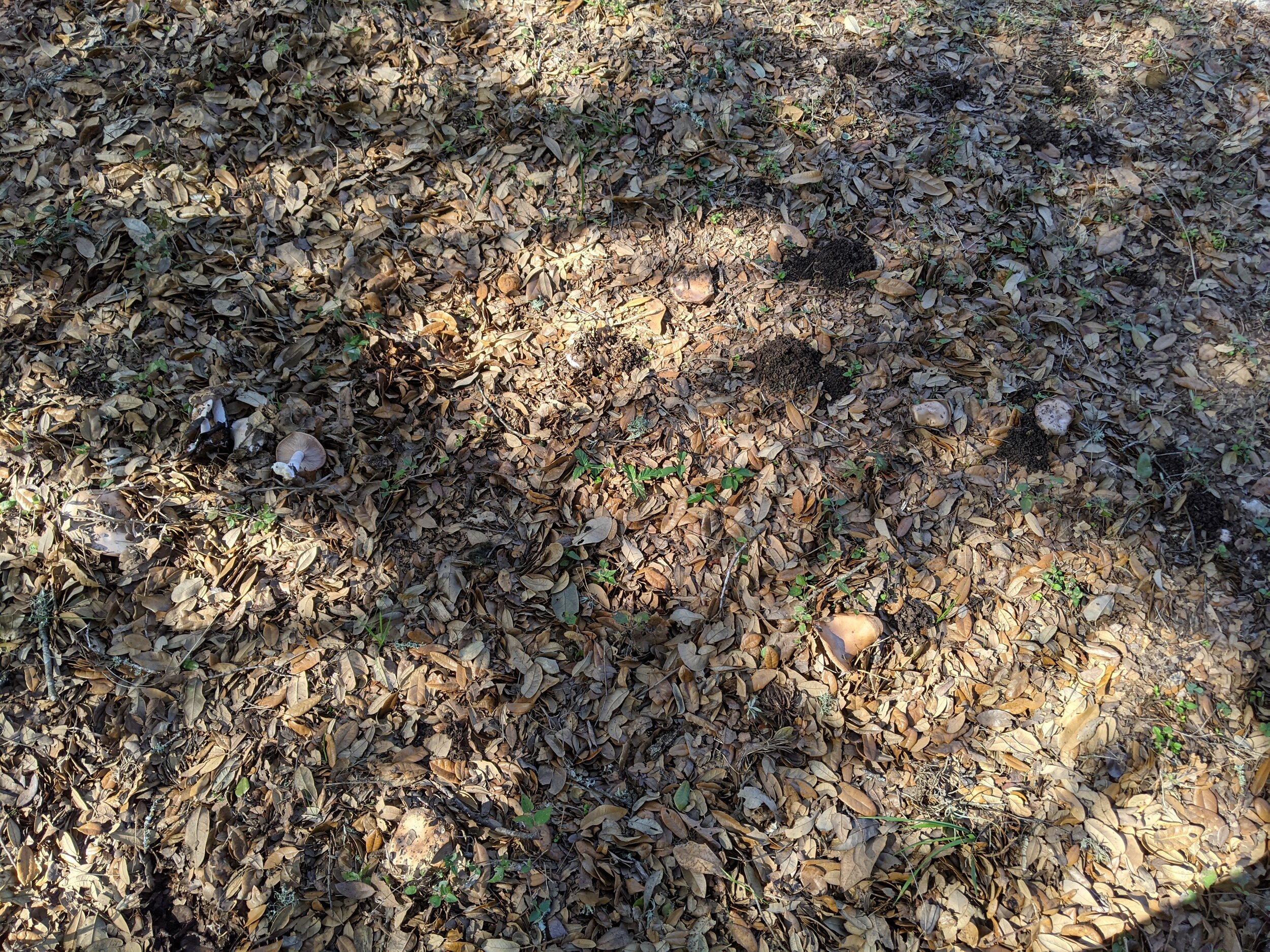
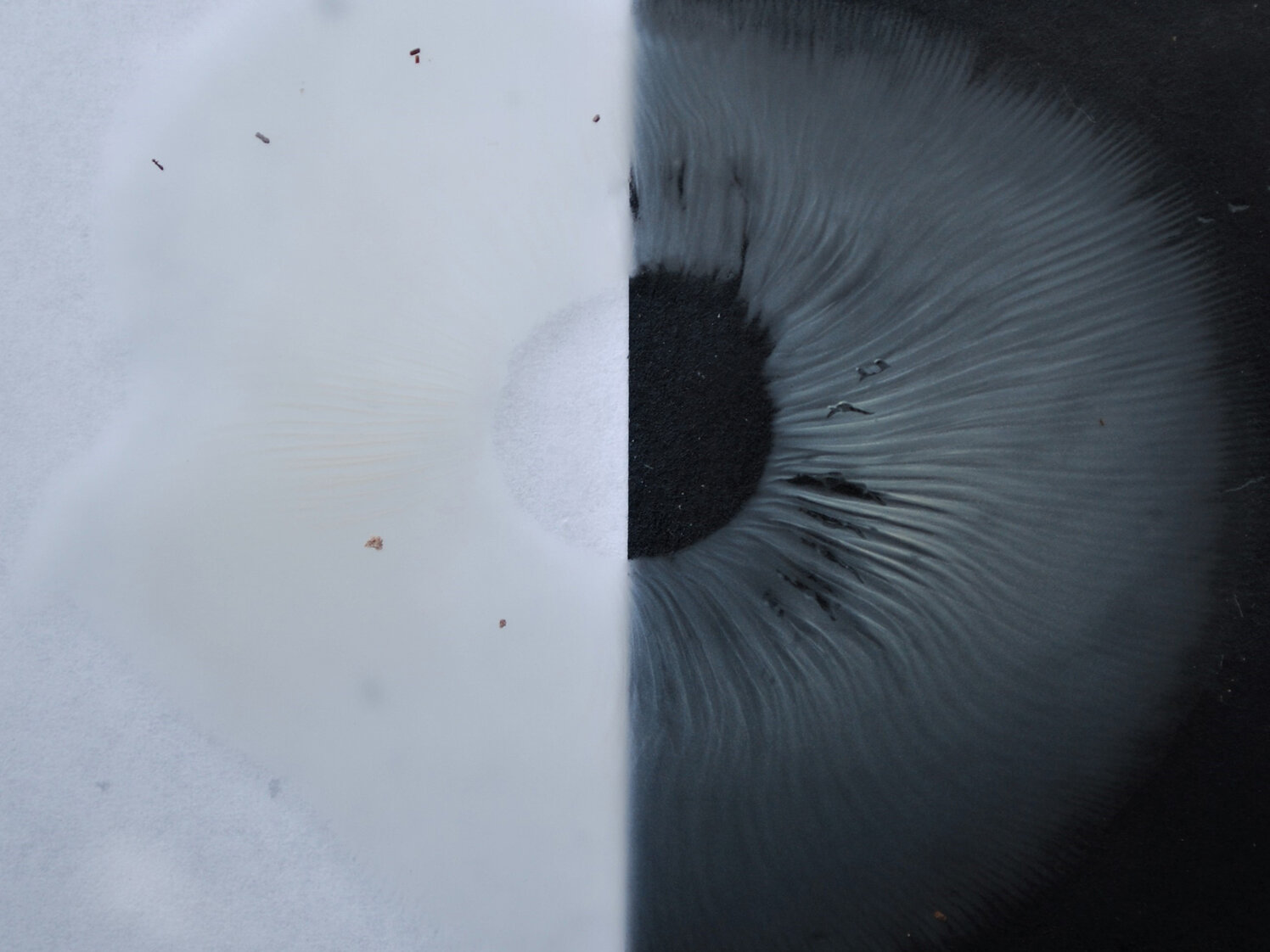
Blewits can be found naturally fruiting during the fall and winter months in Central Texas. I have found them as late as June when we have a rainy year like 2019. They need a heavy frost or freeze to initiate fruiting, so Blewits will not fruit in tropical climates below Central Texas.
The mushroom fruits in hardwood leaf litter under Live Oak trees and near Cedar/Juniper Ash trees in Central Texas. These mushrooms are a saprotrophic species, growing on leaf litter, recycling nutrients back to the soil.
Blewits have a standard “mushroom” shape: simple cap, a thick, stocky stalk, tight gills. There will be no ring or veil around the stalk.
The cap is smooth, almost suede-like appearing lavender purple if there is humidity. It will have leaf litter stuck to it from time to time, but it will NEVER be slimy or viscid. Blewit caps are often beige to mauve. As the mushroom ages, the edges of the cap will get wavy and appear shiny and iridescent when light hits it.
The lavender color on a blewit is concentrated underneath on the gills, although the cap and stalk will be a little purple, too. The gills are close together.
The stalk or stem of the mushroom is bulbous at the bottom and usually has leaves stuck to it when plucked from the ground.
It is rare to find just one blewit and they will often pop up in loose arcs or rings. Blewits do not grow in bunches or on dead wood.
The spore print is one way to be confident with your ID. When you do a spore print — cut the cap off a mushroom and place it, gills down, on a white piece of paper — the spores should light in color, a whitish dull pink to pinkish beige. Their poisonous lookalike, the Cortinarius, has darker, rusty-colored spores.
identifying POISINOUS Cortinarius
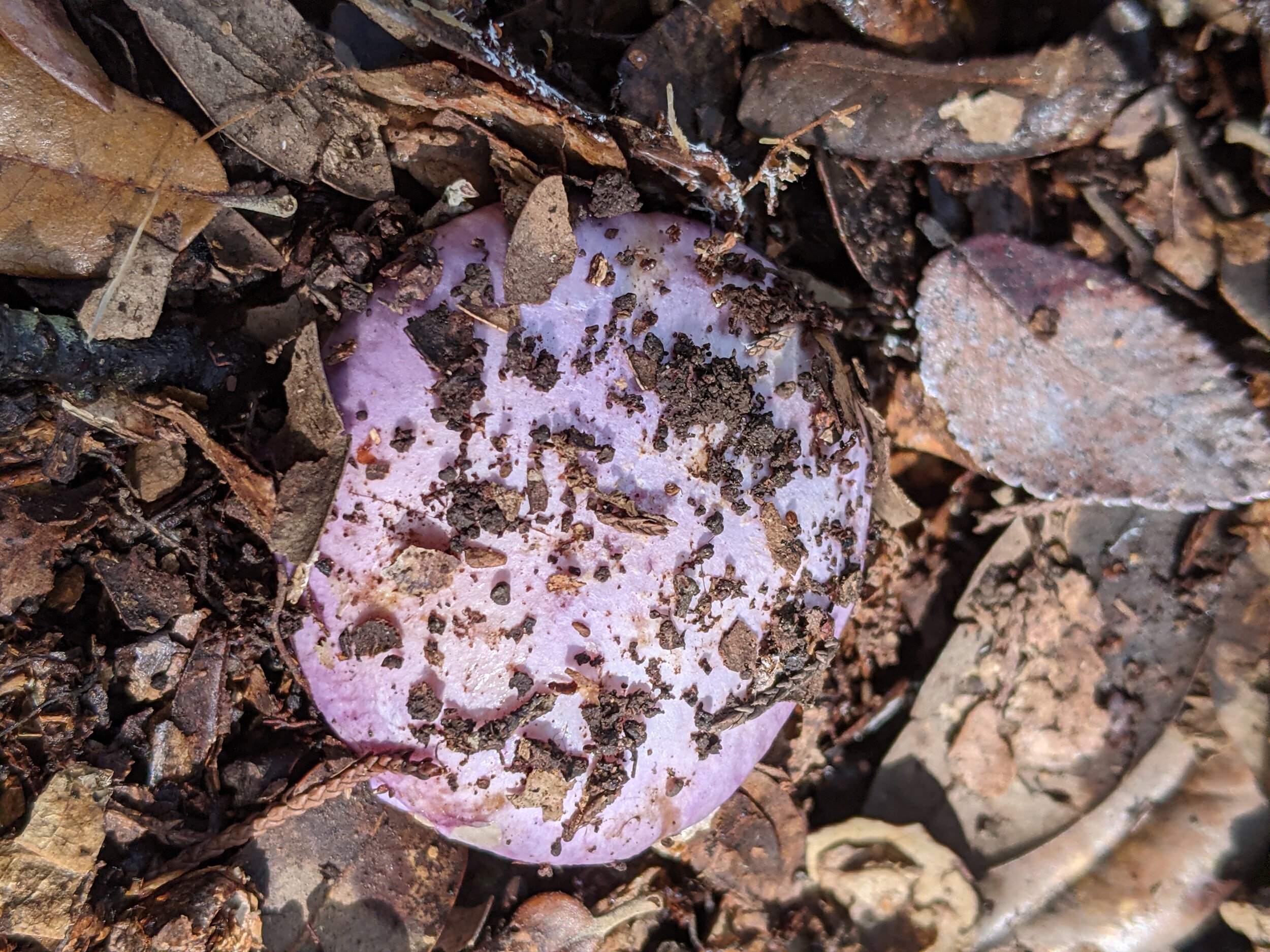
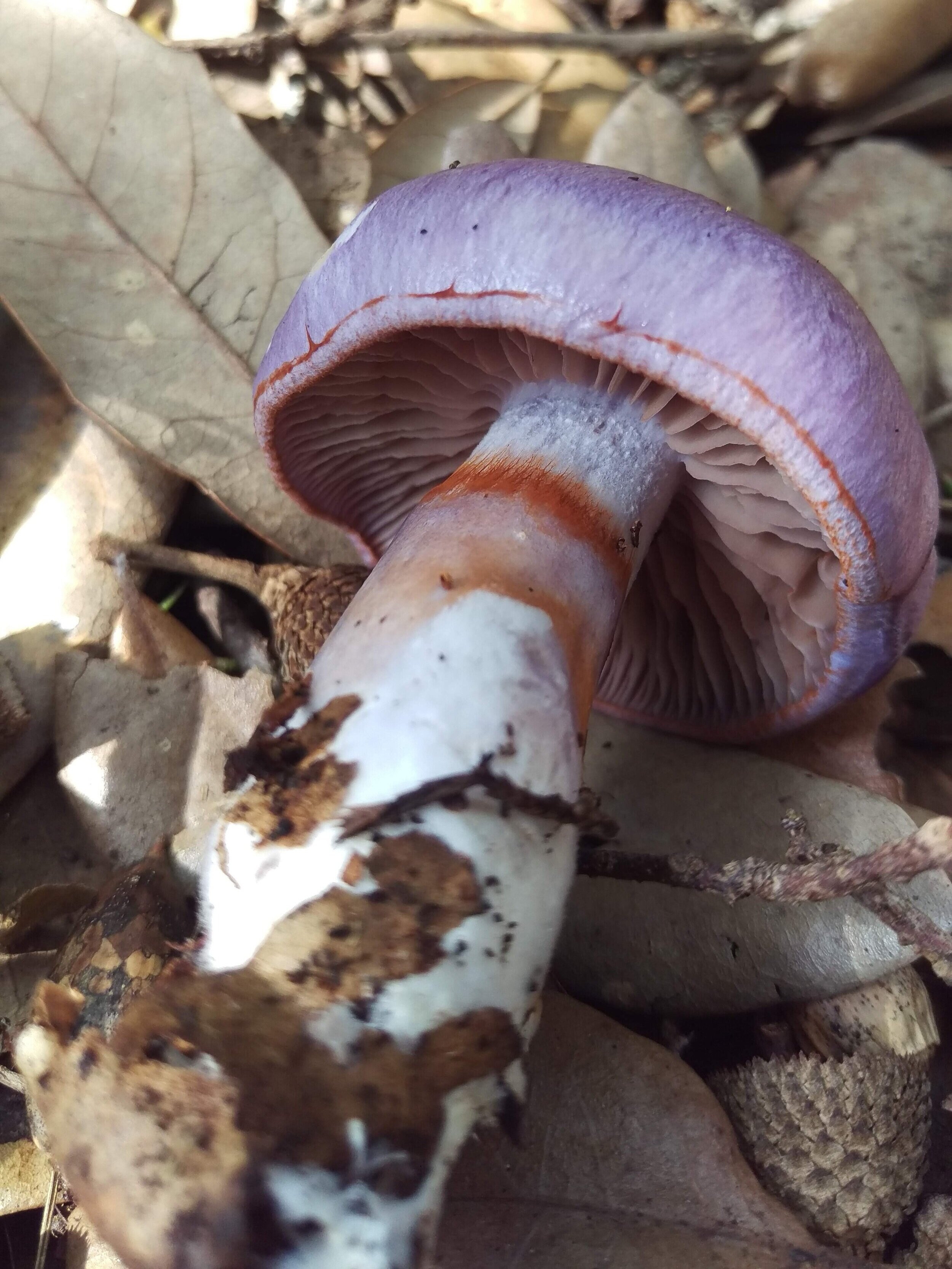
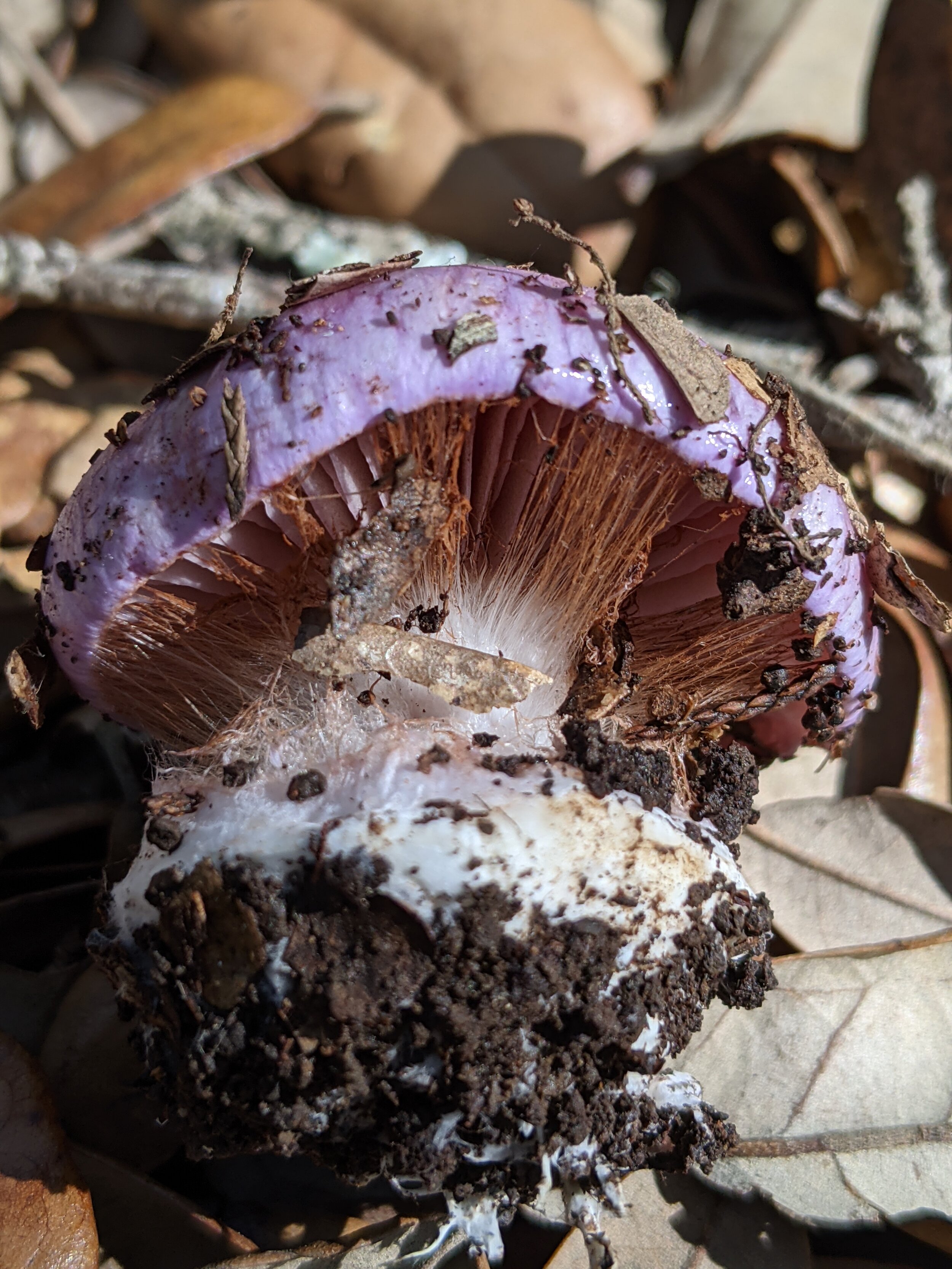
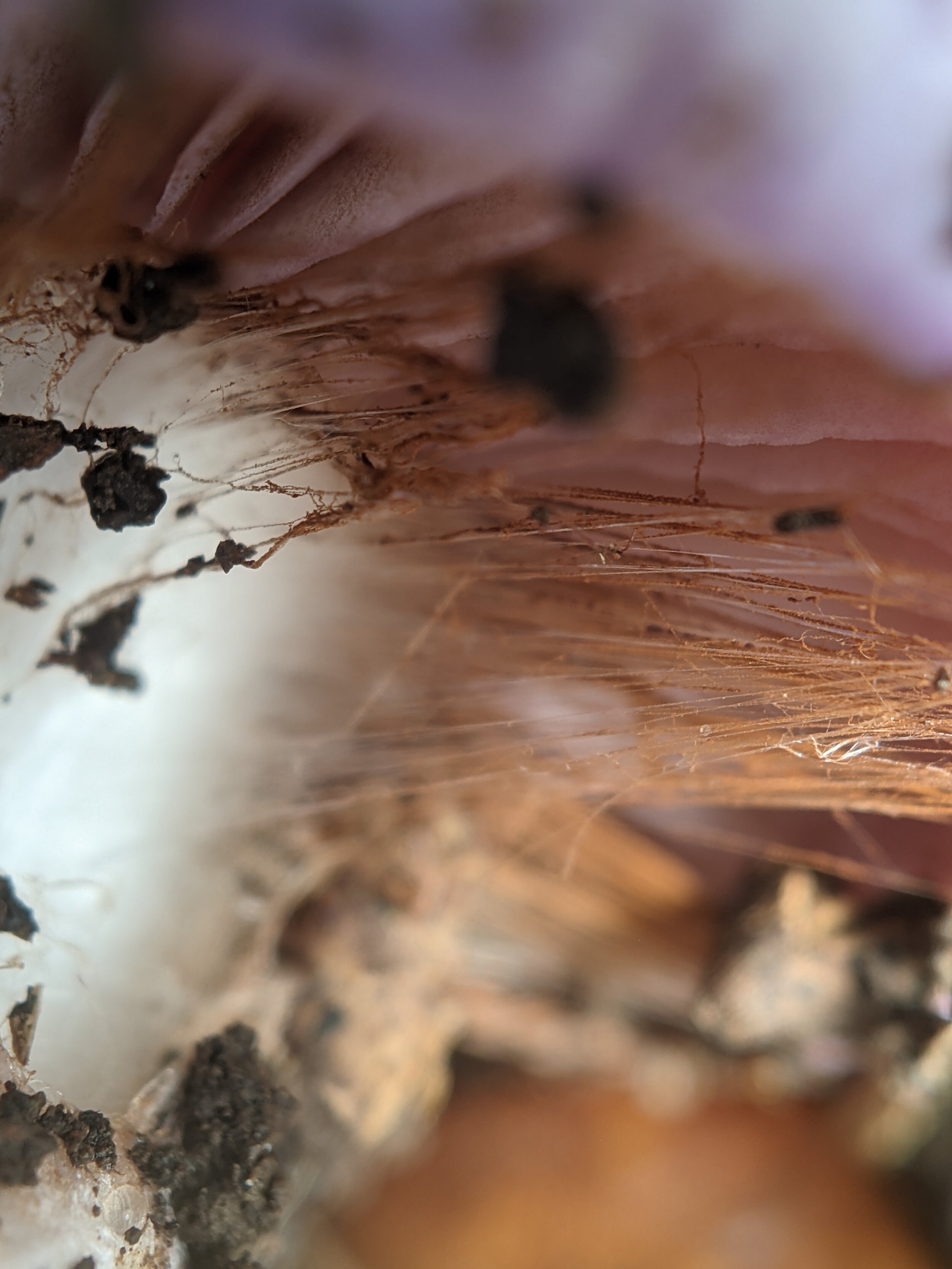
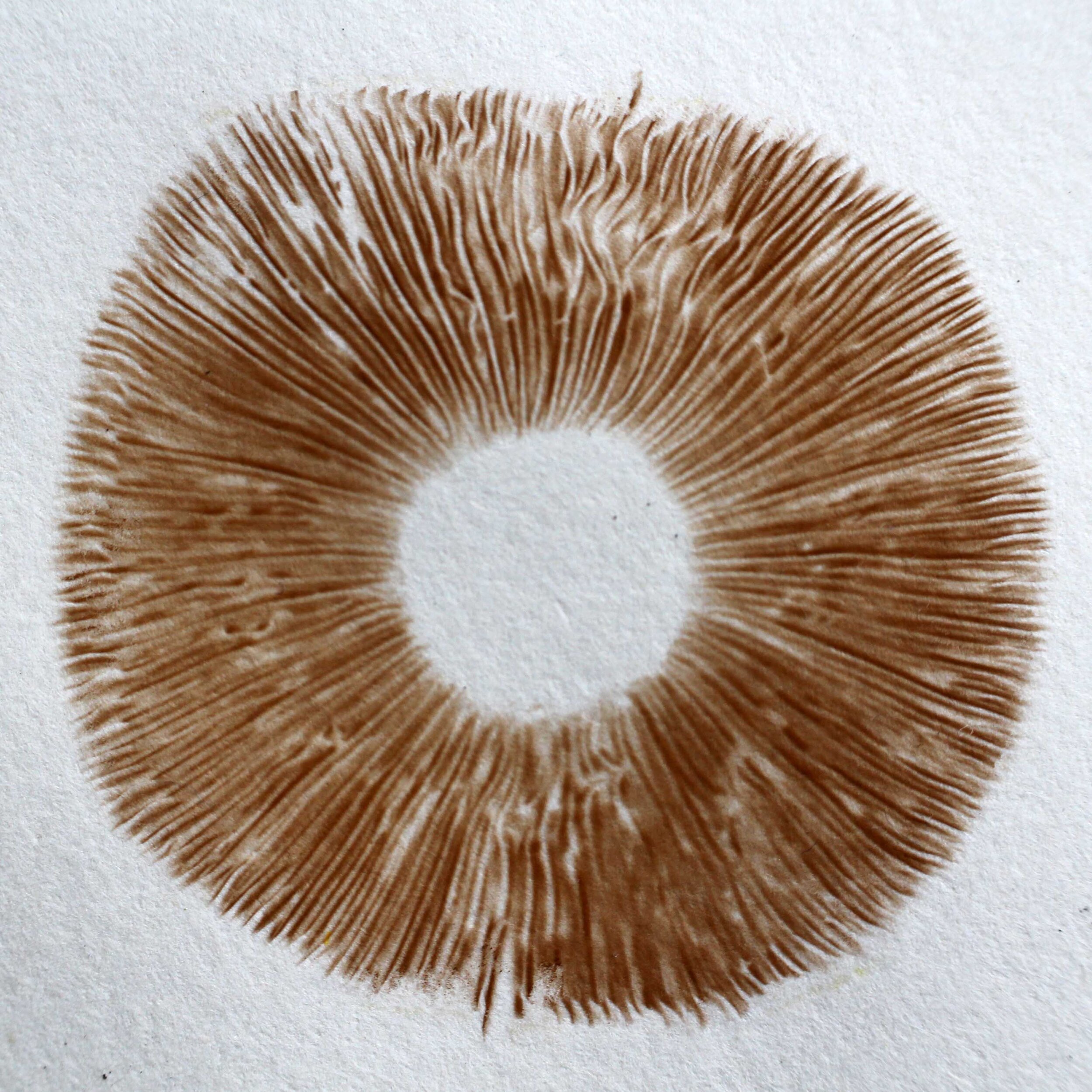
Cortinarius mushrooms will have a slimy, more purple cap.
Around the the stem you will see rusty color that match the color of the visible rusty spores.
Underneath you will find a “cobwebs” around the veil of the cap — those are Cortinarius or webcaps, which include several toxic species.
It's important to do a spore print AND also confirm the ID with an expert. The spores of the wood blewit are light pink to white and the spores of mushrooms are rust colored.
CULTIVATING WOOD BLEWITS
The wood blewit has been cultivated in Britain, the Netherlands and France. Cultivated wood blewits are said not to taste as good as wild wood blewits. I throw the older, bitter wood blewits in my compost pile. I gave a few to Carter from the Myco Research Station at Circle Acres to experiment with.
COOKING WOOD BLEWITS

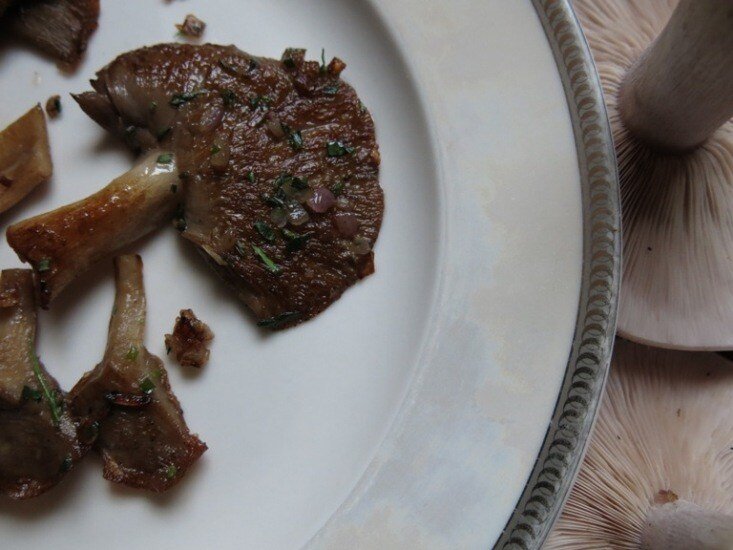
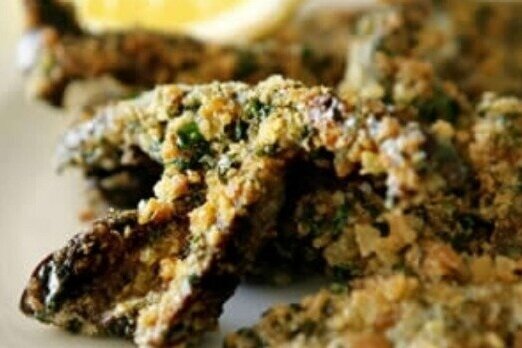
Wood blewits are a good edible, but don’t have the distict flavor of choice edible mushrooms like chanterelles, morels, and porcini. Wood blewits contain the sugar trehalose, which is edible for most people. Blewits can be eaten as a cream sauce or sautéed in butter are great with eggs in breakfast tacos. They have a strong flavor, so they combine well with garlic, leeks or onions. Wood blewits can be preserved in olive oil or white vinegar after blanching. It is always important to cook mushrooms before eating, to break down the chitin. Uncooked mushrooms can cause allergic reactions in sensitive individuals.
RECIPES LINKS
Wood Blewits, Purple Potatoes and Steamed Hake
Dry Sauteed Blewits with Shallots and Tarragon
Bonus Fact from WIkipedia
In Australia, male satin bowerbirds collect blue objects to decorate their bowers with. A young male was reported to have collected wood blewits to this end near Braidwood in southern New South Wales.
By Angel Schatz
Angel Schatz is a resident in Austin, TX, originally from St. Louis area. She worked in digital design and animation for about 15 years. More recently her work has moved to the analog world where I focus on digital content and leadership around food systems, in helping others build resilience in everything from foraging, urban gardening, and doing art.
My interest in mushrooms started at a young age when hunting for morels in the midwest with my granddad. It was rekindled when I found that morels grow in Texas. I found my first Texas Morel this past year!
Follow my adventures @forage.atx.
